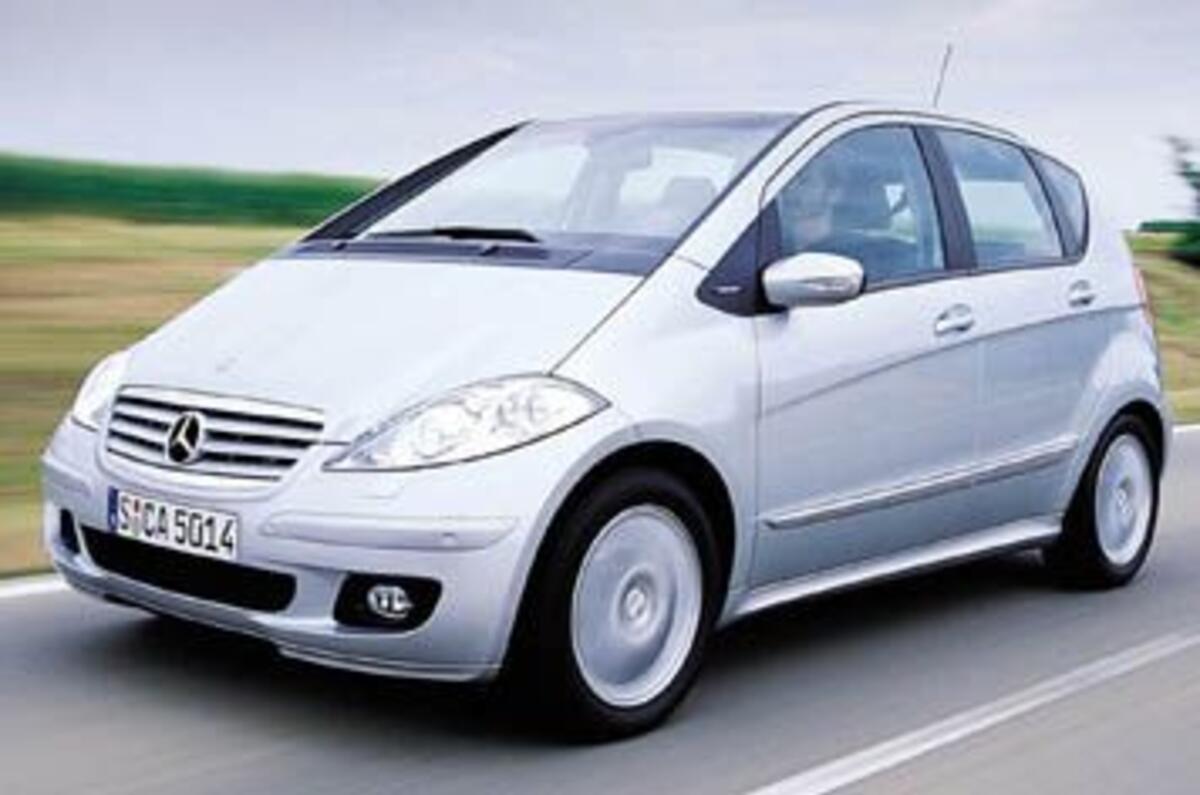What is it?
The second-generation A-class, which hits European showrooms in September but isn’t due to reach the UK in right-hand-drive-guise until February 2005.
It is intended to form the backbone of a whole new range of models with an ambitious production target of 300,000 units annually over a planned six-year life cycle. Along with the five-door hatchback driven here, Mercedes-Benz also has a sporty three-door version ready to tempt buyers. A larger model, to be revealed in concept-car form at the Paris Motor Show, will also join the ranks in 2005 badged as the B-class.
It’s not until you stand the new car up against its six-year-old predecessor that you really get to appreciate how much classier and more modern it looks. If the reaction our test car got is any indication, it is going to be a hit.
The new A-class has grown by 232mm in length over the original short-wheelbase model, at 3838mm in five-door guise. It’s also put on 45mm in width at 1764mm and 6.0mm in height at 1593mm.
While the exterior apes the look of the old model, the interior couldn’t be more different to that of its predecessor. The high dashboard and most of the associated interior trim both look and feel a good deal more expensive than before. The perceived quality is excellent - if not quite best in class, then certainly not far off it. Soft slush-moulded plastic surfaces and upmarket chrome details abound.
The driver’s seat provides plenty of fore/aft adjustment and can be raised or lowered. Crucially, the front seats have been given additional length and greater cushioning in the squab, making them more comfortable over extended journeys. The leather-bound three-spoke steering wheel, generously adjustable for both rake and reach, is once again set in a near-vertical position, jutting out in sports-car fashion.
Increasing the wheelbase by 145mm over the outgoing short wheelbase model has also added 30mm of legroom and 91mm of shoulder room in the back, providing the new car with sort of space usually associated with cars from the segment above. More importantly, the rear footwell now offers greater depth, meaning tall passengers no longer sit with their knees up around chin level.
Continuing its reputation for first-class safety, the new A-class receives adaptive front airbags as well as new head/thorax side airbags in the front seats. It also gets an acoustic seatbelt warning for both the front and rear seats, along with seatbelt pre-tensioners and belt-force limiters on all five seats.
Attention to detail is impressive, with tiny cubby holes incorporated into the floor to house the wiring for the seatbelt recognition and pre-tensioners, while small slots have been placed in the interior trim at the rear to accept the seatbelt and keep it out of the way. Additionally, the front passenger seat’s backrest folds flat to accommodate lengthy items, or it can be removed completely to turn the baby Benz into a one-seat load hauler. It is a neat trick that no prestige small car rival can match, and gives the A-class multi-faceted appeal. From a nominal 435 litres - 45 litres more than before - with all five seats in place, the luggage capacity grows incrementally to a maximum of 1995 litres.
What's it like?
With 134bhp at 5750rpm, the new 2.0-litre four-cylinder petrol engine proves determined, endowing the A 200 with a certain degree of old fashioned GTi flair.












































Add your comment